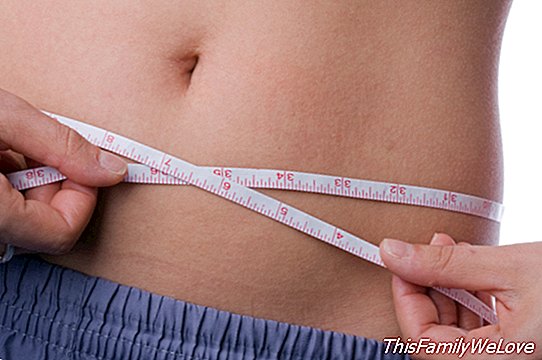Hypopressive gymnastics, the last thing for a flat stomach after childbirth
Every so often, a new sports trend sweeps the fitness world. Hypopressive gymnastics It is achieving as much success as the famous Pilates method, especially as therapy to recover after pregnancy and childbirth. And is that not only get visible aesthetic results, but also hypopressive gymnastics is very beneficial to strengthen other internal organs after delivery.
Goodbye to the classic abdominal exercises
The foundations on which the Hypopressive gymnastics They pull the abdominals and exercises that until now were done to harden and tone the gut. Classic abdominal exercises are not as beneficial as we think, especially after delivery. The increase of intra abdominal pressure between the intervertebral discs causes the weakening of the pelvic floor musculature and damages the spine. Hence, professionals always warn that you have to be very careful with the position when doing crunches.
Hypopressive abdominal gymnastics works very effectively throughout the abdominal region, improves the pelvic floor muscles and reduces intra-abdominal pressure, thus not running the risk of suffering injuries typical of conventional abdominals.
"Respiratory apnea is worked on, that is, maintaining the breathing and generating an ascending abdominal suction in which both the diaphragm and the rest of the abdominal viscera go up, thus avoiding excess pressure in the lumbopelvic region," explains the physiotherapist and osteopath. Flor María Trujillo.
Benefits of hypopressive gymnastics

Hypopressive gymnastics is indicated for anyone who wants to reduce the abdominal transverse perimeter, that is, reduce the waist effectively and strengthen the pelvic floor musculature.
From the FT Trujillo clinic recommend hypopressive gymnastics especially for mothers after pregnancy and, especially, to those women who have problems of urinary incontinence, pathologies such as sexual dysfunctions, menopause, lumbar back pain, uterine prolapse after pregnancy and as a recovery treatment after abdominal or gynecological operations.
Although the safest and most effective way to practice hypopressive gymnastics is through the accompaniment and supervision of professionals, Flor María Trujillo recommends simple exercises to do at home in order for patients to achieve the best results in the shortest possible time.
When it comes to women who have just given birth, you have to differentiate whether you are breast-feeding or not. If she does not give it, the mother can start from week 8. But in the case that she is breastfeeding, it is convenient to wait until week 16. "While breastfeeding, there is a hormonal change that they make that the fibers of the pelvic floor are relaxed, which decreases the effectiveness of the exercise, "says the expert.
Recovery can be achieved in less than 6 months
To begin to notice the results of hypopressive gymnastics, it depends mainly, in the case of mothers, both the dysfunction they present and their willpower to practice the recommended exercises on a daily basis.
Going to a professional at least twice a week and practicing the exercises at home, in a maximum time of 6 months the results and benefits are noticed.
"If this discipline is adopted, various benefits will be achieved, including losing some size, which is quite motivating for moms or anyone interested in keeping fit," says Trujillo.
Marina Berrio
Advice: Flor María Trujillo. Physiotherapist, osteopath and expert in the care for and for women, of the FT Trujillo Clinic




